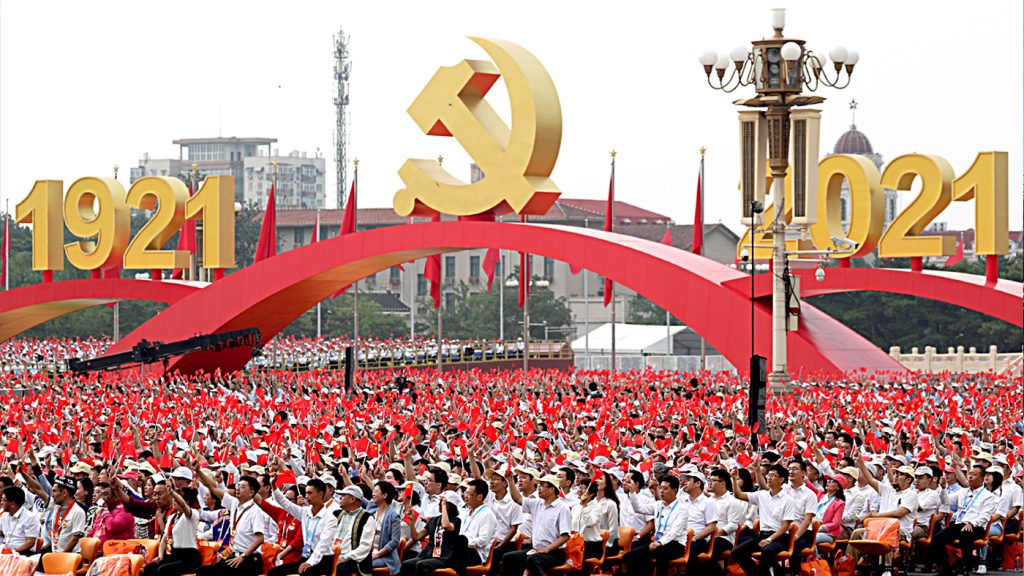OnPoint No. 3
(This article is a translation of the Burmese language version that ISP-Myanmar posted on its Facebook page on December 14, 2021.)

Event
A white paper recently issued by the Chinese government praising its democracy looks to have limited resonance in Myanmar. Beijing’s continued support for Myanmar’s military junta has proved unpopular with supporters of the Spring Revolution.
China’s State Council Information Office issued a white paper titled “China: Democracy That Works” on December 4, five days before a US-led Democracy Summit was set to begin. The Global Times, a Chinese state-run newspaper, reported that the white paper challenged the definition of democracy dictated by Western countries.
Preliminary Analysis
As China becomes more politically and economically powerful, it has also become more confident in showcasing its political system, values, and norms. The Chinese government makes several claims that its democratic political system can fulfill the needs of the people. Even without elections, the voices of the people are heard through dialogue. The system can alleviate people’s struggles. For instance, using this system, the Chinese government lifted many people out of poverty and recently it weathered through the COVID-19 pandemic better than many western countries. China’s democracy system is much better than the western countries’ democracies, such as the United States. This white paper is basically a follow-up to President Xi Jinping’s 2018 statement that China will lead the way in global governance reform. In other words, a popular opinion, even among some scholars, is that “democracy” in the U.S and other western countries is failing. This paper echoes predictions that only the China’s model will prevail in Asia in the future. By claiming that China’s version of democracy is good and it directly benefits the people, the Chinese government is trying to export its model to developing countries to increase its soft power. But it is clear that China was devastated when more than 100 countries, including the majority of the developing countries, participated in the U.S-led Democracy Summit.
In Myanmar, China has worked hard to establish multi-layered relations to restore its influence after the suspension of the Myitsone hydropower project (See Khin Khin Kyaw Kyee, China’s Multi-layered Engagement Strategy and Myanmar’s Reality: The Best Fit for Beijing’s Preferences, ISP, 2018. https://www.ispmyanmar.com/burmese/wp-content/uploads/2021/12/Guanxi.pdf).
Under the National League for Democracy (NLD) government, China tried to build closer ties between its ministries and political party and counter parts in Myanmar. China also attempted to build relations with Myanmar’s civil society organizations and media by offering support and donations aimed to influence them. It has extended its military, political and economic reach not only to ethnic armed groups operating in areas adjacent to China, but also to other areas where China has had less influence. As a result, some political leaders in Myanmar have directly and indirectly praised the “Chinese model”. For example, some have voiced pro-China views, such as “the resumption of the Myitsone Dam will benefit the country”, “even though a Chinese company that is proposing the New Yangon City Project has been blacklisted, it is capable of completing the project”, “the China-Myanmar economic corridor will be full of benefits”, and “it would be nice to have a policy like China which gives spaces to the ethnic groups”.
But it is also important to note that such enthusiasm and envy waned when Myanmar’s Spring Revolution began. Popular anti-China sentiment became evident. Many people in Myanmar view the Chinese leadership as defending the Myanmar junta through its actions at the international level, especially at the United Nations Security Council. The growing anti-Beijing sentiment represents a blow as China has attempted to build multi-layered relationships over the past seven years. Thus, it is certain that the Chinese model will encounter challenges in Myanmar, whose political sphere is filled with the younger generation’s revolutionary spirit.
Scenario Forecast
China seems unlikely to want Myanmar Spring’s Revolution to link with the Milk Tea Alliance movements in Hong Kong and Taiwan. Nor does it want western countries to use Myanmar issues to portray China as a villain. China prefers to return to the previous political landscape before the military coup through negotiations (especially with the help of regional group such as ASEAN), but this is difficult. If China sees the Myanmar’s military-led council as strong and stable, it will likely side with the junta. But China’s version of democracy, a tool of China’s soft power, will not work well in Myanmar’s current political landscape where the new generation is determined to uproot the likes of “Myanmar way to democracy” or “Disciplined democracy”. Whether the supporters of the Spring Revolution accept China’s democracy or not, they need to accept that China influences Myanmar’s pro-democracy movement. Similarly, it is essential to understand China’s views and concerns so that democracy activists can formulate a strategy that can balance China’s concerns while pursuing democratic gains.
ISP’s OnPoint section aims to provide a concise preliminary analysis and scenario forecast on the current significant events and developments.

